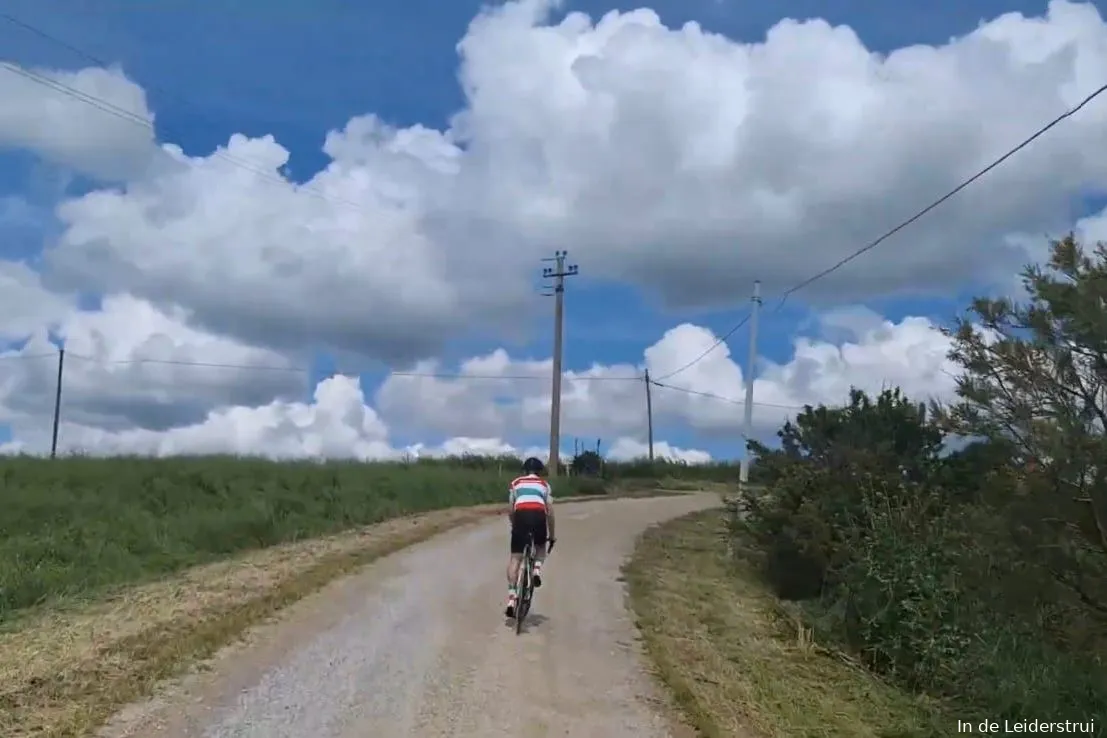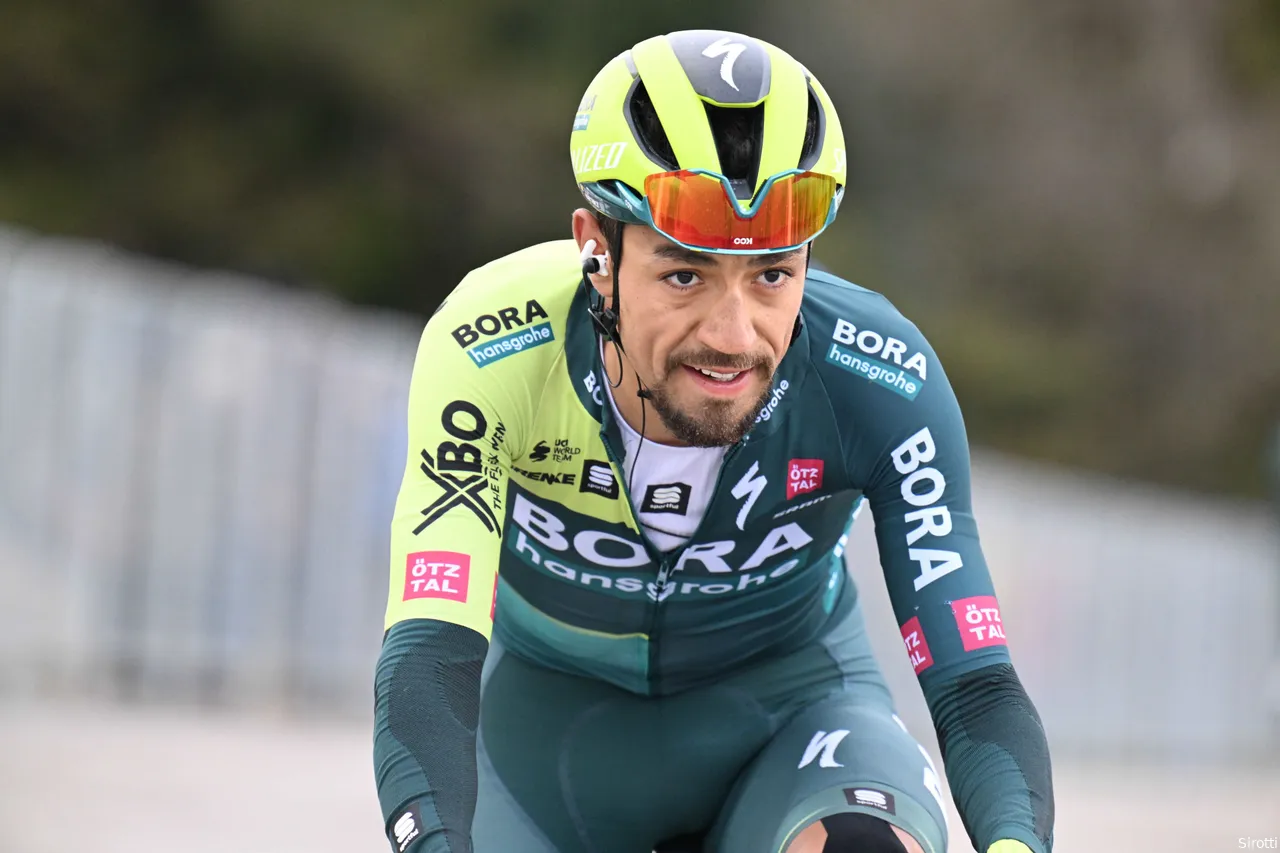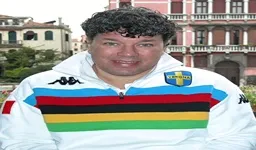🎥 These are the images (and ambitions): teams that have explored the gravel stage of the Giro are heavily favored
CyclingWednesday, 08 May 2024 at 22:25

The sixth stage of the Giro d'Italia briefly traverses Tuscan gravel roads, well-known from Strade Bianche. Though only about ten kilometers long, will the gravel still impact the classification? IDLProCycling.com analyzed the sections to be tackled on Thursday and spoke to the major teams about their preparation and ambitions.
The significance of the sixth stage in the Giro was evident even before the race began. During the pre-race press conference, BORA-hansgrohe revealed that they had meticulously scouted the stage. "In stages like this, danger is always present, so it's beneficial to have done a reconnaissance," stated team manager Enrico Gasparotto. "The finale won't be easy, and we anticipate some excitement, but ultimately, it depends on the overall state of the Giro for all riders."
According to team leader Daniel Felipe Martínez, the stage will be "nerve-wracking." "Reconnaissance is crucial and has provided us with valuable insights," Martínez added. "It allows us to familiarize ourselves not only with the gravel sections but also with the approach to these sectors. It will undoubtedly be a challenging ride. Good legs alone won't suffice; luck also plays a significant role. A mechanical issue at an inopportune moment could set you back significantly in the general classification. You can't win the Giro here, but you can certainly lose it. That's why I'm relieved that we've already tested the gravel sections and bike setup."
Read more below the photo!

Daniel Felipe Martinez
Tractor tracks, large stones, and annoying protrusions
So what makes the finale so tough? During our reconnaissance for this website, we cycled from Rosia to the start of the first gravel section, which is 49.5 kilometers from the finish. The gravel begins after a traffic circle and gradually ascends on a false flat. This may not sound daunting to riders, but considering the speed gained from the mostly downhill stretch from Rosia, it's anticipated to be quite challenging when they hit the first white road. Positioning will be crucial, with riders jostling for position, hoping to avoid any mishaps, as there's little room for maneuvering with five trains in a row.
Following a swift start, we make a right turn just after passing the golf course. Although the view from here is breathtaking, riders will primarily focus on navigating the rapid descent on gravel. The descent isn't smooth, and immediately after comes the ascent to Grotti. On paper, the climb of 2.5 kilometers at 6.0 percent gradient might not seem overly difficult, but with sections reaching up to 10.0 percent, it presents a different challenge. Moreover, the rough tractor tracks and occasional large stones on the road surface add to the difficulty.
After letting some air out of the tires, we proceed, encountering a brief stretch of asphalt before facing a challenging rise where riders with tired legs may struggle. Upon reaching Grotti, the ascent concludes, and the route descends. Then, it's a series of undulating roads through the Tuscan countryside. The challenge doesn't let up, even as there's some respite in the valley below. Following a few more climbs, we approach the stretch towards Pievina, spanning 2.4 kilometers. While there are no major ascents, the route undulates and includes sections with loose gravel. It narrows towards the end, descending towards the asphalt road.
Read more below the video!
Pogacar relies on Strade Bianche experience, INEOS and Visma | Lease a Bike explored
So, the stage on paper doesn't tell the whole story. While the gravel sections aren't lengthy, they can play a crucial role in shaping the stage's outcome. Teams that have taken the initiative to scout them are thus at a significant advantage. INEOS Grenadiers embarked on a scouting mission around the Strade Bianche in March. "We scouted it with some riders because it's a crucial stage," stated team manager Oliver Cookson. "We're well-prepared, familiar with the gravel sections. Our goal is to support Geraint Thomas with riders in excellent form. Whether we'll dominate like in recent days remains to be seen. The Giro is still long, with more stages ahead. Above all, we need to be strategic, and I might seek advice from Tom Pidcock."
Classification leader Pogacar provided no indication of whether he'll scout in the months leading up to the Giro. The Slovenian from UAE Team Emirates is relying on his experiences from Strade Bianche. He won that race as recently as March, after an 80-kilometer solo effort. "It's beneficial that I'm familiar with some of the roads from Strade Bianche, but it won't be the same race," he remarked at the press conference following stage 5. "It will be a stage filled with challenges, and as a team, we need to be well-prepared. We're completely focused."
At Visma | Lease a Bike, Cian Uijtdebroeks traveled to Tuscany to scout the crucial route. However, is it truly crucial? Sport director Marc Reef adds nuance, "You need to stay out of trouble, but I don't believe it's demanding enough to create significant gaps. Although, in this Giro, we've already witnessed more surprises... Cian has scouted it, and Maarten Wynants has been there. So we're familiar with the gravel sections and have visual references."
Il Lombardia 2024

Want to advertize on IDLProCycling.com? We’re already planning for the 2025 season

Pidcock deleted all social media, yet his place at INEOS Grenadiers in 2025 is still uncertain

Visma | Lease a Bike proud of top talent, but less Dutch riders: "Then Wout has the best chance"

How Wout van Aert's crash caused the Van Dijke brothers to leave: "I could follow Mathieu in the Forest of Arenberg"

"Training, nutrition, and more Dutch words than just 'frikadel'; Ferrand-Prévot still learning the ropes"
Latest Cycling News

Want to advertize on IDLProCycling.com? We’re already planning for the 2025 season

Pidcock deleted all social media, yet his place at INEOS Grenadiers in 2025 is still uncertain

Visma | Lease a Bike proud of top talent, but less Dutch riders: "Then Wout has the best chance"

How Wout van Aert's crash caused the Van Dijke brothers to leave: "I could follow Mathieu in the Forest of Arenberg"

"Training, nutrition, and more Dutch words than just 'frikadel'; Ferrand-Prévot still learning the ropes"
Popular Cycling News

November vacation month: Groenewegen junior learns to ride a bike, Visma | LaB back in action, Van Aert running toward cyclo-cross return

Cycling transfers WorldTour 2025 | Victor Guernalec to ride with brother Thibault at Arkéa-B&B Hotels

Meanwhile in the peloton | Burke once again 'beats' the best GC riders in the world

Geraint Thomas returns to where it all began in his final season: "I've always enjoyed it here"

Girmay would be happy to win just one Tour stage next year: "I already got what I never even dreamed of before"
Latest Comments
- Talk is cheap! Next year barring crashes with a healthy team... all well be on track! Some need to talk to make a headline!mootman27-11-2024
- I do not see this event listed on HBO Max Sports Online? Can anyone confirm? Thanks!
 MrYuck23-11-2024
MrYuck23-11-2024 - It seemed that he was focusing forward at the time of the crash, after seeing a quick video snippet. But one thing I think he should focus on more intently is breaking a bad habit he has, right now. And that is his constant looking over his shoulders. He does that so much, that I am very sure it is not good for him. Simply watch videos of the greats of CX and you will see very little of that constant looking over their shoulders. That is a behavior that betrays a bit of insecurity on his part. He shouldn't be so concerned, incessantly, about what is over his shoulder. He needn't worry they didn't all disappear. He neds to keep his focus more ahead of himself, and he needs to pay a bit more attention to himself, in a confident manner. It is very frustrating to watch, because it is apparent that he has a lot of potential, and is in much better shape thwan many of his competitors, but the mental game needs to be sharpened more, because that part of strategy plays a huge part in the final results
 reemmo022-11-2024
reemmo022-11-2024 - hahahaha love this shit! I didnt even watched the race, but reading all the gossip articles of how stupid this is!Zatoichi19-11-2024
- Van Aert is really handsome. He can influence me all day! Ditto for Philipsen. Why do you think many of us love cycling?: to see heroic attempts at climbing mountains at high altitudes or to watch speedsters sprint for the finish line or to watch a human being ride at break neck speed down a tricky descent? No, it's all about their lean physiques and muscular legs. (apologies for objectifying these dedicated and amazing athletes).BarwonHeadsUp25-10-2024